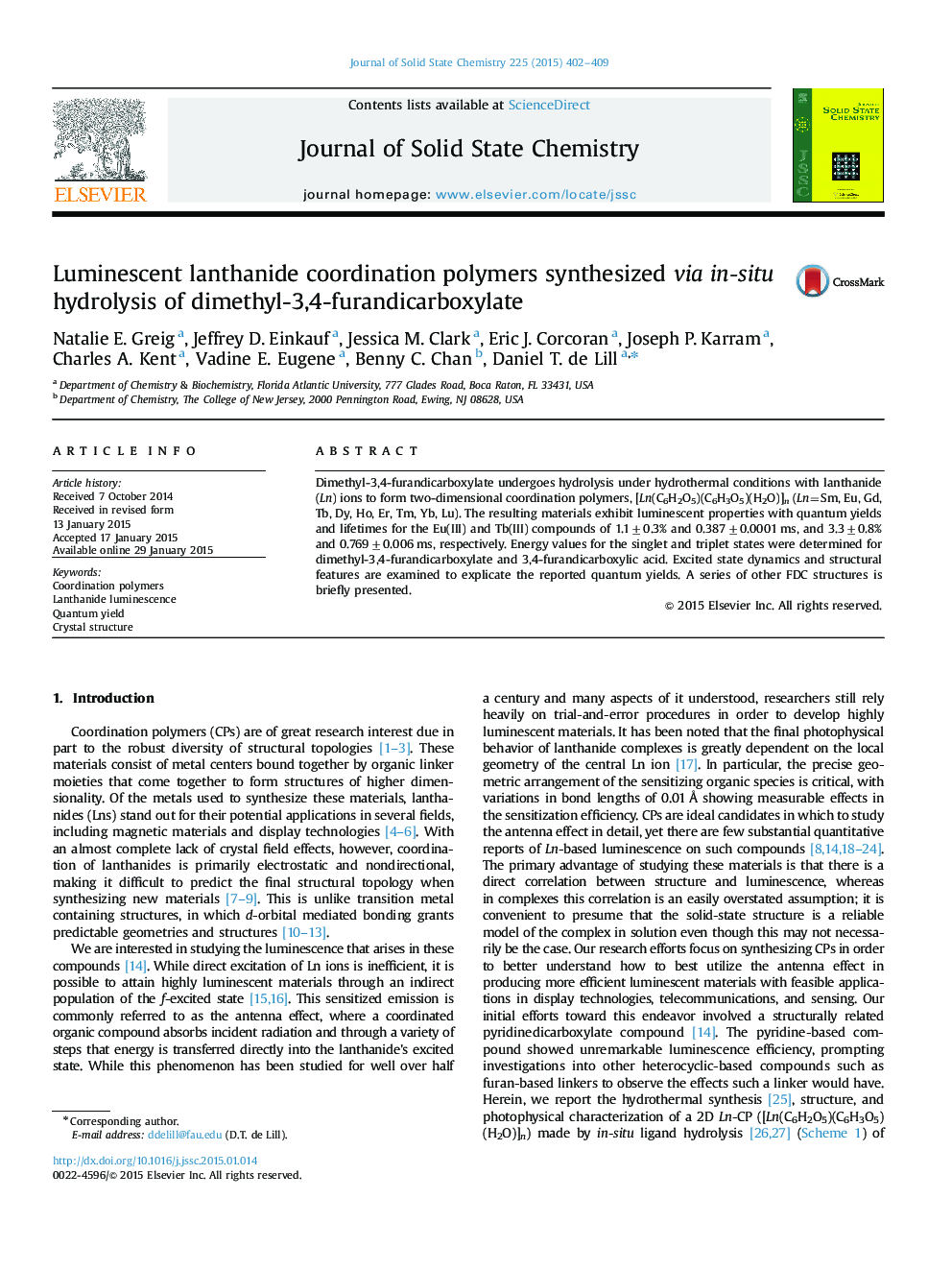| کد مقاله | کد نشریه | سال انتشار | مقاله انگلیسی | نسخه تمام متن |
|---|---|---|---|---|
| 1331647 | 1500091 | 2015 | 8 صفحه PDF | دانلود رایگان |
• A new lanthanide–furandicarboxylate coordination polymer is presented.
• Eu and Tb compounds display luminescent properties, albeit with low quantum yields.
• Photophysical behavior explained through the compound׳s triplet state and structure.
• Nonradiative deactivation of luminescence through high-energy oscillators was noted.
• Molecular modeling of the organic moiety was conducted.
Dimethyl-3,4-furandicarboxylate undergoes hydrolysis under hydrothermal conditions with lanthanide (Ln) ions to form two-dimensional coordination polymers, [Ln(C6H2O5)(C6H3O5)(H2O)]n (Ln=Sm, Eu, Gd, Tb, Dy, Ho, Er, Tm, Yb, Lu). The resulting materials exhibit luminescent properties with quantum yields and lifetimes for the Eu(III) and Tb(III) compounds of 1.1±0.3% and 0.387±0.0001 ms, and 3.3±0.8% and 0.769±0.006 ms, respectively. Energy values for the singlet and triplet states were determined for dimethyl-3,4-furandicarboxylate and 3,4-furandicarboxylic acid. Excited state dynamics and structural features are examined to explicate the reported quantum yields. A series of other FDC structures is briefly presented.
A new two-dimensional coordination polymer derived from the in-situ hydrolysis of a furan dimethyl ester with lanthanide(III) ions was obtained in order to study its photophysical behavior when constructed from trivalent Eu and Tb. Quantum yields, lifetime measurements, and singlet/triplet state energies values were obtained. The nature of the material׳s excited state dynamics is examined and correlated to its structure in order to explain the overall luminescent efficiency of the system.Figure optionsDownload as PowerPoint slide
Journal: Journal of Solid State Chemistry - Volume 225, May 2015, Pages 402–409
